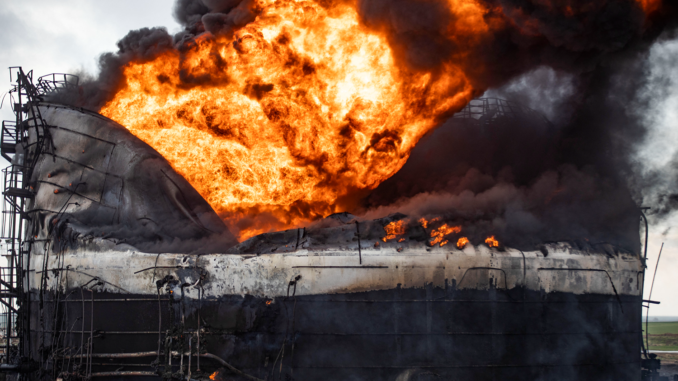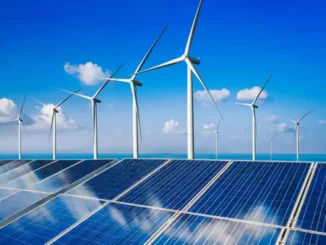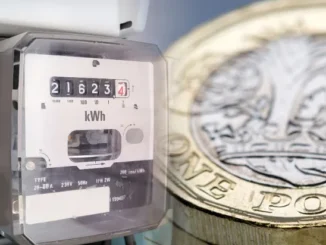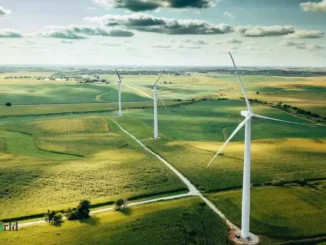
From Russia to Yemen, gas and oil exports have become prime targets.
As global conflicts worsen, energy infrastructure and shipments from Europe to the Middle East to Asia are increasingly coming under attack. But the energy sector is also shaping the conflicts themselves—and the diplomatic efforts to manage and mitigate them. With the future of clashes such as the Russia-Ukraine war or the Israel-Hamas conflict deeply uncertain, energy acts as a key weather vane.
Perhaps no geopolitical hot spot has highlighted the importance of the energy sector more than the Russia-Ukraine conflict. The start of Russia’s full-scale invasion of Ukraine in February 2022 prompted a major rewiring of global energy flows as the European Union has accelerated efforts to diversify away from Russia, which made up 40 percent of the bloc’s natural gas imports prior to the war. Now that number has been drastically reduced, with imports falling by more than 50 percent in 2023. Russia, meanwhile, has ramped up energy exports to non-Western countries since the start of the war, most notably China and India.
The Kremlin has pursued politically motivated energy cutoffs to Europe while the United States and EU have ramped up sanctions against the Russian energy industry. But the fight for energy has also taken on new battlefield significance—Russia has attacked critical energy infrastructure in Ukraine through drone and missile strikes, and now Ukraine is utilizing similar tactics against Moscow. Ukrainian drones have targeted energy facilities throughout western Russia, damaging and disrupting Russian oil refineries and prompting the Kremlin to institute a ban on gasoline exports for a period of six months.
Attacking enemy supply lines and logistics is not unusual during times of war, but this strategy is becoming a key feature of the conflict because revenues from energy exports are a major source of funding for Russia’s war efforts. Kyiv has decided to directly target that source in a bid to shift momentum in the conflict.
These attacks are likely to be an increasingly important feature of the war moving forward, particularly as Ukraine has struggled thanks to contentious politics inside the country and delays in Western support. As Russia pressures Ukrainian forces in the east of the country, Kyiv has shifted its strategy to expand the scope of the war deep inside of Russia proper in order to increase its own pressure on Moscow. And with Ukraine bolstering its own drone capabilities, this element could be a defining feature of the broader conflict in 2024.
As such, Ukraine can be expected to target energy and military sites ever deeper inside of Russia and become more assertive in the size and scope of its attacks over the course of this year.
The Middle East has seen as a similar spate of attacks. The Israel-Hamas war has led to an intensification of the proxy war between the United States and Iran, a conflict that has manifested most clearly in attacks by the Iranian-backed Houthis in Yemen on Western commercial ships transiting through the Red Sea, which accounts for 14 percent of all global oil exports and 8 percent of global liquefied natural gas cargo. These attacks have redirected shipping and trade flows away from the entry points at either end of the Red Sea, leading to a 64 percent decrease in trade volume through the Bab el-Mandeb Strait and 46 percent decrease through the Suez Canal, while prompting a 75 percent increase around the Cape of Good Hope in southern Africa.
If the Israel-Hamas war or other regional conflicts were to intensify, this could impact other crucial energy chokepoints, such as the Strait of Hormuz, which accounts for around 20 percent of global oil transit and supply. This would have significant implications for major energy producers and exporters—including Saudi Arabia, the United Arab Emirates, and Qatar—not to mention its impact on global energy prices and the broader economic implications for countries throughout the world.
While conflicts in Ukraine and Gaza are actively disrupting energy production and transit today, tensions between the United States and China have the potential to further impact the energy sector in the future. Like the Strait of Hormuz, the South China Sea contains major chokepoints for global energy supplies, accounting for another 20 percent of global oil transit. Tensions have been rising between the Washington and China over this crucial corridor, prompting outreach from the Philippines to the United States to provide economic and security backing for energy exploration in the South China Sea.
One important lever that China holds over Taiwan is energy. Taiwan has a 97 percent dependence on imports for its energy consumption, and those supplies could be vulnerable to potential disruption by China, either through interdiction or through legal and political pressure backed by economic and diplomatic statecraft. With the constraints to a Chinese military intervention or outright blockade of Taiwan still quite high, expect gray zone tactics by Beijing around the Taiwan Strait or increased diplomatic outreach to some of Taipei’s more China-friendly energy suppliers, such as Russia or Qatar.
Energy has become intimately intertwined with each of these three geopolitical hot spots, experiencing disruptions from attacks and contention over resource exploration and extraction.
But the energy sector has also shaped these conflicts in a more constructive manner via diplomacy. For example, energy-rich Persian Gulf states such as Qatar, Saudi Arabia, and the UAE have all served as mediators in the Russia-Ukraine conflict, using their energy-fueled economic and diplomatic ties with both Kyiv and Moscow to negotiate agreements such as prisoner exchanges. Qatar has also been a primary mediator in the Israel-Hamas conflict, while China recently mediated a diplomatic normalization agreement between Iran and Saudi Arabia, both of which serve as major energy suppliers for Beijing.
Taken together, these developments indicate that the energy sector will be increasingly impacted by these geopolitical hot spots yet can also provide more momentum for diplomatic efforts by various players (and in particular, nonaligned energy-producing states). The interconnectedness of the energy trade is both a military vulnerability and a potential opportunity for peace.



